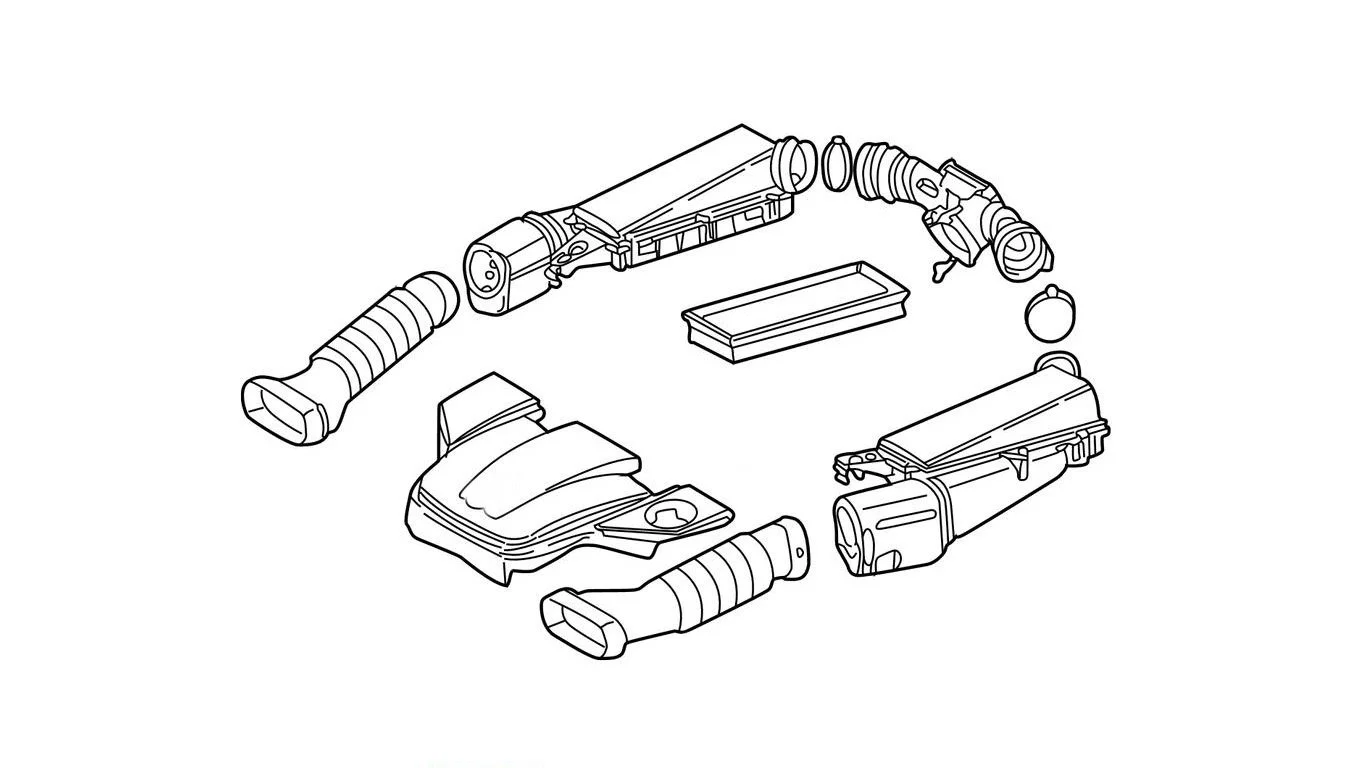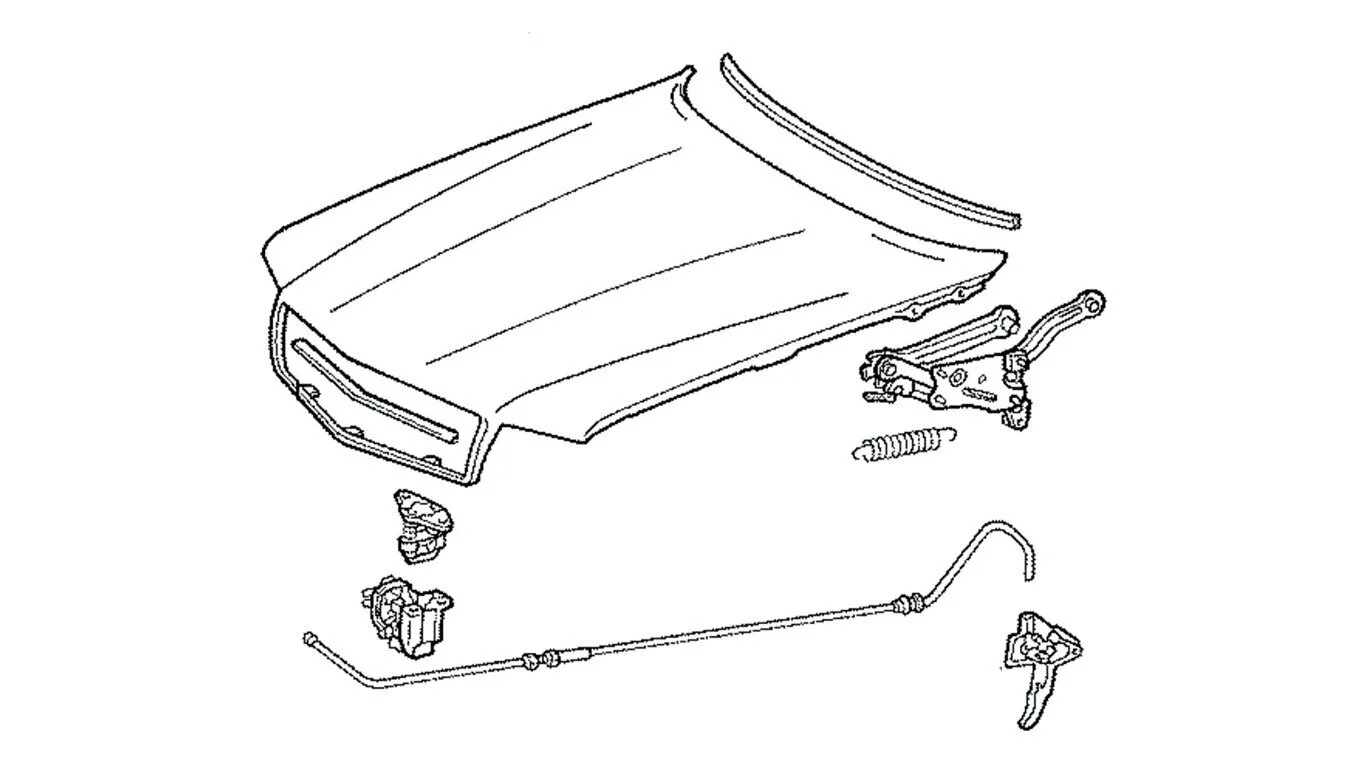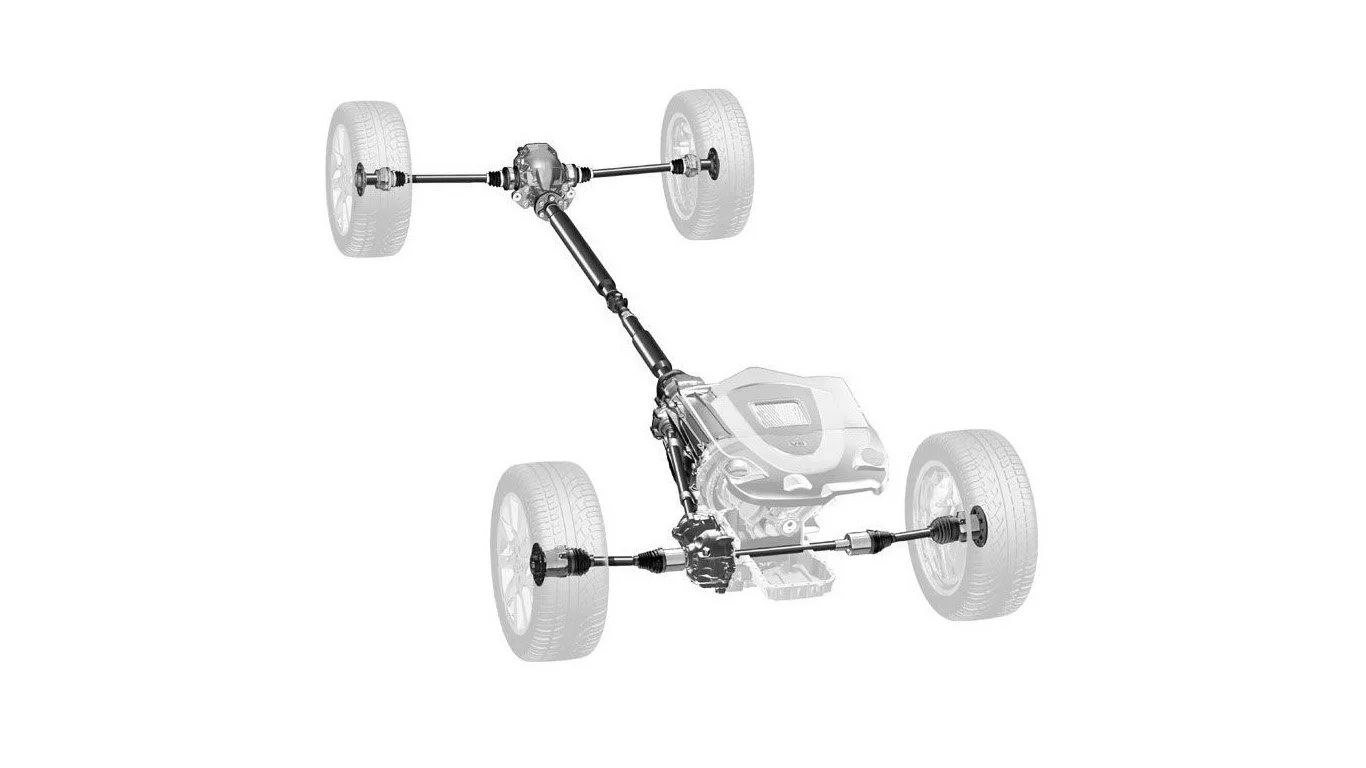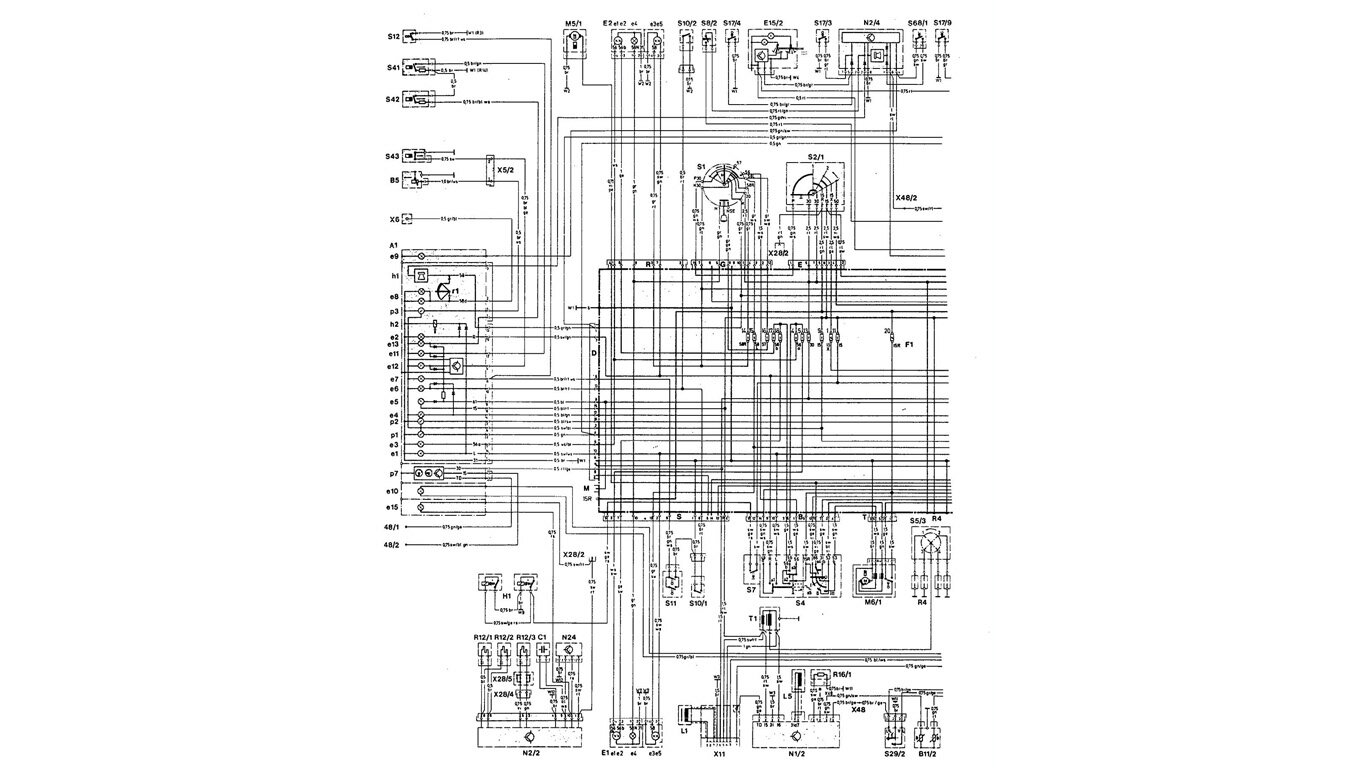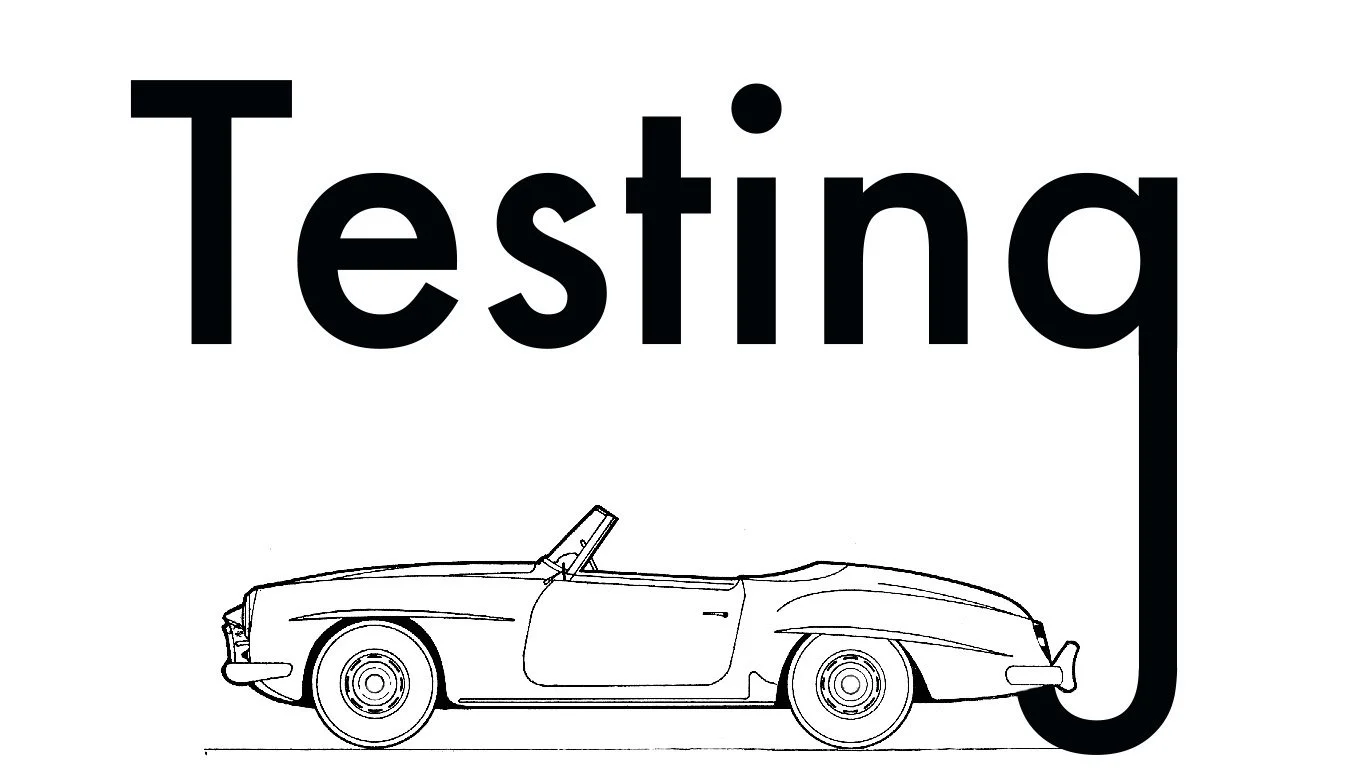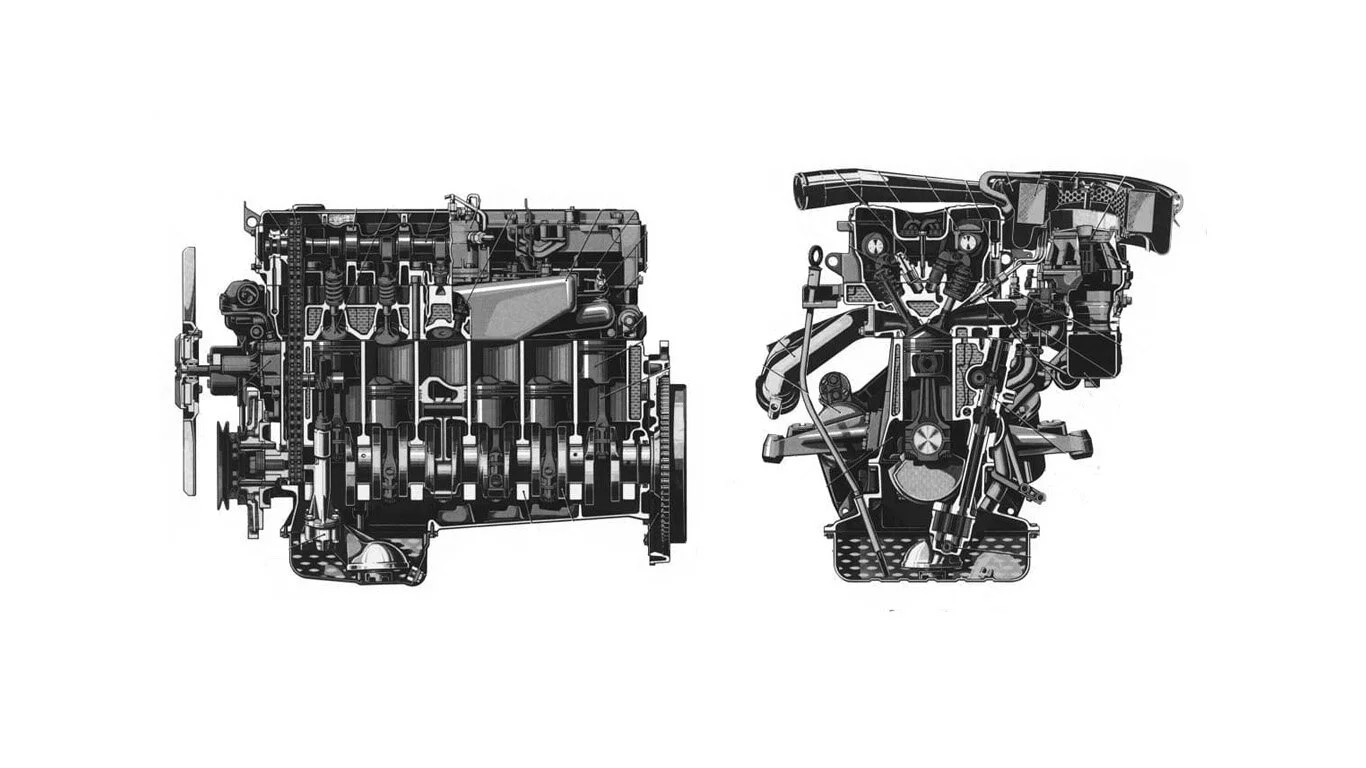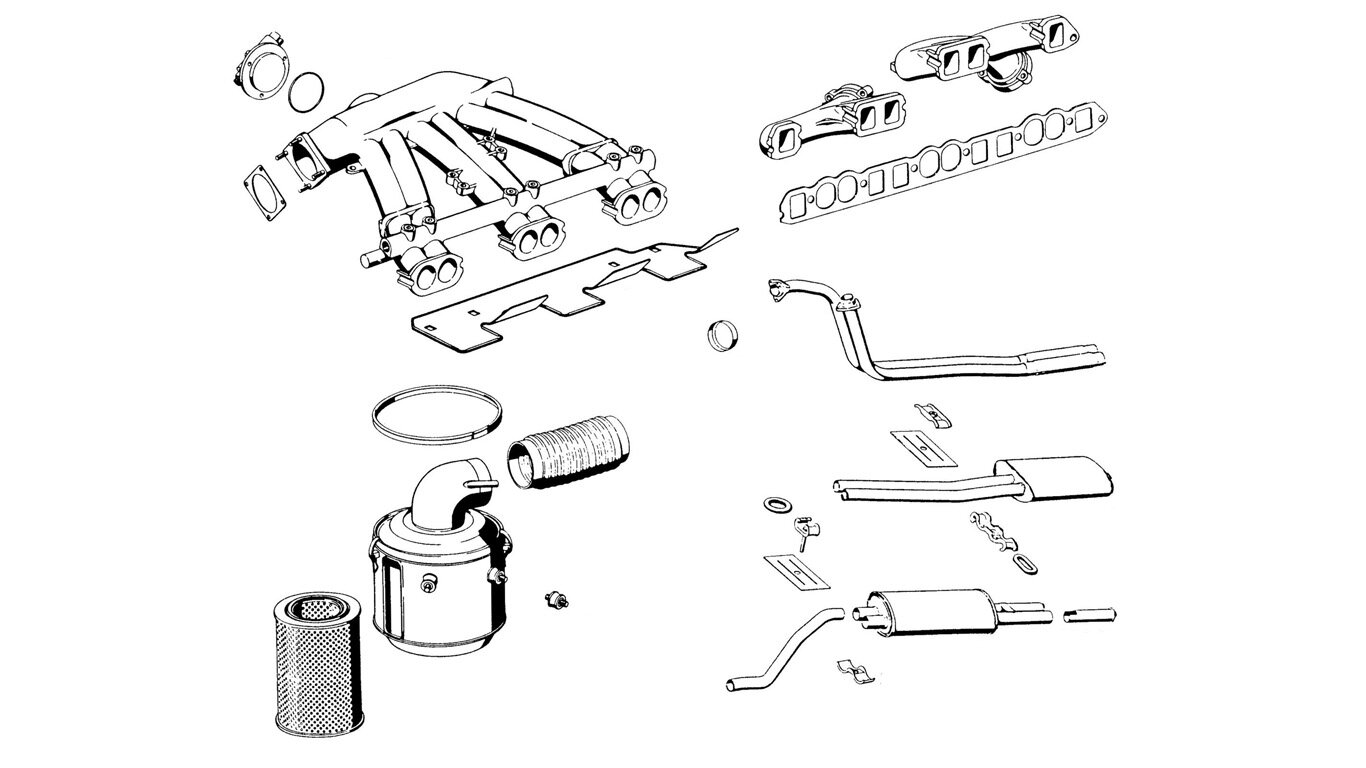What’s in a service?
At Hoover Mercedes our goal is to provide the best quality service for the best price. This is done to ensure your Mercedes-Benz ownership experience is second to none. We believe that aside from providing good service, good information is key. Below you’ll find information about what services we offer, why the service is needed, how the part/system in question works, and what are some common symptoms of a faulty part. If at any moment you have a question, don’t hesitate to ask us!
Air Intake
2002-2004 C32 AMG Intake shown
Services Provided
Cleaning (If applicable).
Diagnosis.
Inspection and replacement of air filters, air pump assemblies, air mass sensors, and/or vacuum systems.
Kompressor installation.
What is an Air Intake?
The function of the air intake system is to allow air to reach your car engine. Oxygen in the air is one of the necessary ingredients for the engine combustion process. A good air intake system allows for clean and continuous airflow into the engine, thereby achieving more power and better mileage for your car.
A typical vehicle’s air intake system has three main parts - the air filter, mass flow sensor and throttle body. Located directly behind the front grille, the air intake system draws air through a long plastic tube going into the air filter housing, which will be mixed with the car fuel. Only then will the air be sent to the intake manifold that supplies the fuel/air mixture to the engine cylinders.
Why Does It Need Maintenance?
One of the main ingredients necessary to produce a combustion in the engine is air, therefore any restriction of clean air that prevents optimal operation of the engine will effect engine output.
Common Symptoms
Check Engine Light - If any sensor detects an abnormality or is faulty.
Excessively high or surging idle - Usual indication of a vacuum leak.
Reduction in engine performance - Typically caused by a dirty or clogged air filter.
Belts
2007 C200 Kompressor Timing Chain
1999 E320 Serpentine Belt
Services Provided
Inspection and replacement of serpentine belt and/or tensioner.
Inspection and replaced as necessary on supercharger belts (Kompressor models).
V-Belt inspection and replacement.
Inspection and replacement of belt, pulley, tensioner or damper.
What Are Belts?
There are two common belts: the timing chain, and the serpentine belt.
The timing chain system, which include the chain, chain silencers, chain guides, and tensioner, synchronizes the camshaft and crankshaft rotation so that the engine’s valves open and close at the correct time. This is how your engine manages the combustion and exhaust process. Without it, your engine will not run. Since the 1950’s Mercedes-Benz has chosen to use timing chains instead of rubberized timing belts because they are more durable.
The serpentine belt is a long, winding, rubber belt that snakes its way (thus, the name) around pulleys connected to the alternator, power steering pump, air conditioning compressor, and the water pump. Sometimes called a fan belt, alternator belt, or accessory drive belt, the serpentine belt is spun by the engine’s crankshaft and, in turn, spins, or “drives”, the accessories.
Why Does It Need Maintenance?
If your timing chain breaks, your engine will stop working and typically will cause major engine damage. If a faulty chain causes the timing to be off the valves could open at the wrong time and be struck by your engine’s pistons.
Because the serpentine belt is the only part driving the engine accessories, without it the accessories will not work. The air conditioning will not operate because the compressor is not pumping. The power steering will fail because its pump is not working. The electrical system will die when the battery dies due to lack of power from the alternator not producing any power. Finally, the water pump might cause the engine to overheat as well. In Lehman’s terms, the vehicle will stop working.
Common Symptoms
Of a timing chain issue:
Backfires.
Buzzing, whine or rattling - If this is coming from the area of the chain it probably indicates the guides and/or chain tensioners are breaking or have broken.
Loss of power - If your vehicle feels sluggish, and is typically up there in miles, that could indicate the chain itself has stretched.
Operating at higher RPM’s, meaning the vehicle seems to be working harder than normal.
Rough idle, meaning your engine shakes.
Trouble starting/ not starting at all - Could be caused by the timing being off or the chain failing completely.
Of a serpentine belt issue:
Cracks/tear/wear on the belt.
Engine overheating.
Power steering and AC not working.
Squealing noise from the front of the vehicle - due to slippage or misalignment.
Body & Trim
1990 560SEC hood assembly
Services provided
All trim and emblems replacement.
Badging and de-badging.
Doors - Closing assist, latches, locks, seals.
Exterior/Interior Mirror - Repair (if possible), replacement of glass, switches, motors and assemblies.
Hood - Buffer, handles, pad and latch, release cables, shocks, and straps.
PSE pump vacuum system diagnosis and repair (including element and valve replacement).
Seats - Adjustment switches, cables, and knob replacement.
SRS (supplemental restraint system) diagnosis and repair.
Sunroof - Assembly, motor, and glass replacement.
Windows - Replacement of glass, motor, regulator, and switch.
Windshield/Headlamp wiper/Washer systems - Replacement.
Wheel center caps, grill assemblies and molding.
Brakes
2014 E500 front wheel brake system
Services Provided
ABS (anti-lock braking system) - Cables, control units, replays and sensors.
BAS (brake assist systems) - Diagnosis and repair.
Brake fluid flush- Drain fluid, clean reservoir, replace fluid, and replace caps.
Brake hoses - Inspection, replacement.
Brake master cylinder replacement.
Calipers - Rebuilt, replacement.
Pad and rotor thickness - Inspection.
Pads/break sensors - Replacement.
Parking brake - Cables and shoes adjustments and/or replacement.
Rotors - Replacement, wheel bearing repack and reseal.
SBC (sensitronic brake control) - Diagnosis, repair.
What Are Brakes?
Simply, it is a mechanical device which uses friction to absorb kinetic energy from a moving system in order to suppress its movement. How it achieves that can be done in multiple ways.
With Mercedes vehicles there are two kind of brakes: disc brakes and drums brakes.
With Mercedes of old you’ll find anything from vacuum assisted drums to disc brakes mounted on front wheels while drum brakes mounted on rear wheels. For some time, however, Mercedes has fitted disc brakes on all four wheels. Given that, we’ll focus on disks.
The standard brake system set up includes:
Brake Pads: Usually made of ceramic, metal or other hard-wearing composite materials, the pads are the part of the system that actually contact the rotor on both sides.
Brake Pedal: The pedal required to activate the brakes, though with modern vehicles the brakes might be applied for you in an emergency situation.
Caliper: A device, or housing, on which brake pads and pistons are mounted. This allows for the one or more single pairs of opposing pistons to clamp from each side of the rotor.
Fluid Reservoir: It is the brake fluid or brake oil which is used on the braking system.
Fluid Lines: These are pipes through which the brake fluid flows in the vehicle.
Master Cylinder: This is the part of the system that converts the non-hydraulic pressure from your foot into hydraulic pressure and controls slave cylinders at the opposite end of the hydraulic system.
Piston: It is the moving component contained in a cylinder inside the caliper. The piston is the forcing agent that causes the pad to apply pressure to the rotor.
Rotor: Though some performance Mercedes-Benz sometimes have rotors made of reinforced carbon-carbon, ceramic matrix or other composite, it is more common for a rotor to be constructed of cast iron. These are connected to wheel and/or axle.
Vacuum Booster: Only effective while vehicles engine is running, it is used to enhance the master cylinder and augment pressure from a drivers foot through the use of a vacuum in the engine intake.
Why Do They Need Maintenance?
Considered one of the most important piece of safety, brakes that do not perform properly can lead to a collision. Regular maintenance ensures you vehicle has its maximum breaking performance at all times.
Common Symptoms
Brake wear message - Typically signifying you are due for a service. It could also be your vehicle’s smart electronics alerting you to a problem.
Burning Smell - A sign of overheated brakes or clutch. Continual use in this scenario will cause the brake fluid to boil, which causes total brake failure.
Grinding - Grinding that you also feel in the pedal could mean a number of things including:
Gravel or a rock caught in the caliper unit,
The brake pads may be worn through, and breaking is being produced by metal on metal friction. If this is occurring grooves are most likely being created on the brake rotor.
Pulling to a side - Indicative of a brake hose or a caliper problem. Applying too much breaking pressure to one caliper.
Soft/Spongy brake pedal - Normally indicates a leak.
Squealing/Squeaking - If you start hearing a high-pitched noise that stops when you apply the brakes that’s likely the sound of the brake pad wear indicators. They’re made of steel so they make this sound when they start contacting the rotor.
Wobbling/Vibration/Scraping - May be the result of an uneven rotor.
Check Engine Light Diagnosis
Services Provided
Diagnosis
What is a Check Engine Light?
The check engine light, also known as the malfunction indicator lamp, is a signal from the car's engine computer that something is wrong. It’s normally measuring an engine productivity level through its emissions output. Any variance from the optimal output can indicate a problem and thus the light comes on.
Why Does It Need to be Looked At?
A check engine light can mean a plethora of different things, some of which can be serious. It also makes it impossible to pass an emissions test.
Climate Control
1999 E320 climate control
Services Provided
Climate Control Units - diagnosis and replacement.
Heating & Air Conditioning - diagnosis, repair, replacement and recharge.
What is Climate Control?
Climate control works in conjunction with the vehicles air-conditioner and heater, so let’s describe each.
The air-conditioning system in your car is comprised of a compressor, condenser, expansion valve and evaporator. Refrigerant is compressed in the compressor and turns into a hot gas. In the condenser, this hot gas is cooled to a liquid state and travels to the expansion valve. As the refrigerant goes through the expansion valve it returns to a low-pressure gas and rapidly cools in the evaporator. A fan blows over the evaporator and cools the air that eventually blows out your vents.
The heater in your car is basically a smaller version of your cooling systems radiator. Hot engine coolant is circulated through a small radiator, often times called a heater core. A fan is positioned in front of the heater core to blow cold outside air over the fins. As this air travels over the heater core, it heats up and becomes the hot air which blows out your heater vents.
Climate control is a more sophisticated form of air-conditioning, which allows the temperature inside the vehicle to be accurately controlled through “zones”. In these “zones” users can set the desired temperature and the system automatically adjusts the speed and amount of cold air introduced into the cabin. Depending on which Mercedes you have, and if the vehicle is equipped with climate control, you can have anywhere from 2 to 5 zones.
Why Does It Need Maintenance?
Colorado is a state that experiences incredible temperature changes, from the mild to the extreme. Unfortunately we don’t have the power to change ambient temperatures, but we are able to change the one inside our vehicles. This makes for a more enjoyable journey. In order for that to occur the system has to be functioning.
Common Symptoms
A/C blowing warm air - Could indicate the condenser is damaged, the condenser fins are damaged/obstructed, or that the condenser has developed a leak.
Buzzing - Probable overcharge of refrigerant at prior service.
Clicking/Knocking - When a/c on it most likely means loose mounting bolts or any of the other various air conditioning components not being tight enough.
Cooling System
2012 E63 AMG cooling system
Services Provided
Auxiliary cooling Fan - Diagnosis and repair.
Auxiliary water pump, fan assembly, sensor, belt and/or resistor replacement.
Cooling fan - Blade, bracket, clutch, pulley and/or shroud replacement.
Engine temperature sensor - Replacement.
Expansion reservoir - Cap, hose, plug and tank replacement.
Hoses - Inspection, replacement.
Overheating - Diagnosis and repair.
Pressure test - For identification of leaks/failed components.
Radiator - Repair, replacement.
Thermostat - Testing, replacement.
Water pump - Testing, replacement.
What is a Cooling System?
The cooling system serves to keep the engine running at optimal temperatures in order to ensure efficient, clean operation. An engine that runs too cool or too warm is detrimental to performance. The system’s components include a radiator to dissipate heat, a fan or fans to ensure adequate airflow for radiator cooling, a thermostat valve that opens when the desired operating temperature is reached, a water pump to circulate coolant through the engine by means of hoses, and an expansion tank that allows the coolant to expand, and exit, the cooling circuit when hot, and to return when the car is turned off and the engine cools.
Why Does It Need Maintenance?
The cooling system is designed to keep the engine at peak operational temperature, failure to achieve that can result in catastrophic engine failure.
Common Symptoms
Antifreeze smell - Indicator of a leak in the system.
Antifreeze under vehicle - Probable leak.
Coolant level always low - Also an indicator of a leak.
Overheating - Indicative that one or multiple areas of the system is failing or has failed.
Drivetrain
W204 4matic system
Services Provided
Cooling hoses and mounts - Inspection, replacement.
CV joints & boots - Inspection. replacement.
Disc, flywheel ring gear, throw-out bearing - Replacement.
Driveshaft - Bushings, support, support-bearing, boot replacement.
Electronic shifter selection module - Diagnosis, repair.
ETC (electronic transmission control) - Diagnosis, repair.
Flex discs - Front and rear flex discs inspection, replacement.
Linkage/Switches - Adjustments, inspection, lubrication, replacement
Manual transmission repair.
Wheel bearings and seals - Inspection, repack, replacement.
Transmission service - Done at intervals recommended by Mercedes-Benz.
Master/Slave cylinder - Bleeding, replacement.
What is a Drivetrain?
The drivetrain is the name given to the group of components that drive the wheels. All the bits in between the engine and wheels that produce, develop or assist drive are what make up the drivetrain. The drive train is typically made up of:
Axels - Rods or shafts that rotates the wheels and supports the weight of your vehicle.
Differentials - Splits the engine torque two ways, allowing each output to spin at a different speed.
Driveshafts - Rotating shaft that connects the transmission output shaft to the differentials
Transmission - Another name for a car’s gearbox, it’s the component that turns the engine’s power into something the car can use through the use of gears.
Why Does It Need Maintenance?
Your drivetrain connects your engine to the wheels of your vehicle, essentially turning the energy produced by the engine into motion. This is a strenuous process, and without routine maintenance, it can very easily fail. Failure in any part of this system is costly.
Common Symptoms
Vibrations from under the vehicle – A common symptom of a failing driveshaft is an intense shaking coming from underneath the vehicle. Worn out u-joints or bushings can cause the driveshaft to vibrate. If you don’t get the u-joints or bushings serviced, it can lead to further damage to other drivetrain components. Please note that tire problems can also cause vibration problems, but it’s easy to tell them apart. Vibrations caused by tire balance issues are speed sensitive while driveshaft vibrations aren’t.
Car shudders upon acceleration – Probable loose u-joint or bad center bearing. Specially from low speeds/standstill.
Clicking or knocking noise – Sign of a worn or failing CV joint.
Difficulty turning – Potential sign of a driveshaft issue.
Loud clunking noise – If occurring when shifting your vehicle, this is potential sign of a worn u-joint or driveshaft damage.
Squeaking noise – At low speeds can be caused by a u-joint that needs lubrication.
Electrical
1992 190E ignition wiring diagram
Services Provided
Alternator - Inspection, replacement.
ATA (anti-theft alarm) systems.
Battery - Testing, replacement.
Charging system - Diagnosis, testing.
Cruise control - Diagnosis, repair, replacement.
Exterior lighting - Diagnosis, repair.
Heated seat systems.
Horn - Diagnosis, replacement.
Ignition system - Diagnosis, replacement.
Instrument clusters - Diagnosis, replacement.
Interior lighting - Diagnosis, repair.
Lighter/Power port - Repair, replacement.
New control modules - Version coding.
Power seat systems.
Power soft-top systems.
Power sun shade systems.
Starting system - Diagnosis, repair, replacement.
Voltage Regulator - Diagnosis, replacement.
Wiring Harness - Diagnosis, replacement
Xenon headlamps - Diagnosis, repair.
What is Electrical?
The electrical system of a car is a closed circuit with the battery (or batteries) providing power.
Why Does It Need to be Looked At?
The electrical system is responsible for the smooth functioning of several important parts, such as the clock, defroster, headlights, locks, power windows, sensors, sunroof, and many others. Without proper electronics your vehicle could very well not run properly.
Common Symptoms
Battery constantly draining - Indication of an old battery or that there’s something draining it.
Burning (electrical/plastic) smell - This is a sign of an electrical malfunction or a short circuit, especially if it occurs with all of the other symptoms on this list. Cease driving if you’re experiencing this.
Dimming lights - Potential sign charging malfunctions and low system voltage due to a dying battery, loose wires, or a malfunctioning alternator belt.
Fuses keep blowing.
Struggling to start/not starting - Probable evidence of a dead/dying battery, especially is a clicking sound can be heard.
Emission Inspection Failure
1964 SL being tested
Service Provided
Diagnosis
Repair
What is an Emission Test?
Simply, an emissions test checks for the number of air pollutants coming out of a car’s exhaust. It does so in two ways:
OBD (on-board diagnostics) inspection - The technician connects the vehicle to a computer to measure the efficiency of the vehicle’s ECM (engine control module). In the ECM, and while the vehicle is operational, it is monitoring the exhaust system, the catalytic converter, as well as the engine, transmission, and fuel system. It does so to detect poor performance, bad fuel economy, and high emissions.
Exhaust gas analysis - This is where the technician applies the exhaust line gas analyzer to the tailpipe to analyze the levels of carbon dioxide, carbon monoxide, hydrocarbon, nitrogen oxide, oxygen, and soot (in diesel models).
Why is It Needed?
Failing a test means something is wrong and must be addressed. Without addressing the issue and passing you will not be able to register your car.
Engine
M110 in-line 6 cylinder engine
Services Provided
Complete tune-up
Cylinder head gasket - Diagnosis, replacement.
Engine mounts - Inspection, replacement.
Exhaust/Intake manifold gaskets - Diagnosis, replacement.
Exhaust/Intake valves - Diagnosis, replacement, testing.
Oil pan - Diagnosis, replacement, resealing.
Seals - Inspection, replacement.
What is an Engine?
Fully known as an internal combustion engine, the engine converts the combustible mixture of fuel and air into energy. Engines typically consists of a fixed cylinder and a moving piston and the expanding gas created from the combustion process push the piston, which in turn rotates the crankshaft. Ultimately, through a system of gears in the drivetrain, this motion drives the vehicle’s wheels.
There are two common types internal combustion engines:
Gasoline engine (spark ignition) - fuel is mixed with air and then inducted into the cylinder in the intake process. After the piston compresses the fuel-air mixture, the spark ignites it, causing combustion. The resulting expansion of the combustion gases pushes the piston during the power stroke.
Diesel engine (compression ignition) - only air is inducted into the engine and then compressed. Diesel engines then spray the fuel into the hot compressed air causing it to ignite.
Why Does It Need Maintenance?
Not having an engine means that you no longer have a vehicle, but more a heavy rollable structure. Not ensuring your vehicle’s engine is properly maintained will eventually make you arrive at such predicament.
Common Symptoms
Check engine light.
Decreased performance.
Exhaust smoke - Depending on the color of smoke it can mean different things:
Blue - Oil is burning
White - Coolant in the combustion chamber
Black - Too much fuel being used
Knocking noise - most likely the sign of a failing engine bearing if it rises and falls in speed with engine RPMs.
Rough idle - Could indicate a fuel delivery problem.
Exhaust
1963-67 230SL exhaust system
Services Provided
Air pumps - Inspection, replacement.
System components - Inspection, replacement.
Brackets, clamps, flanges, hangers - Inspection, replacement.
EGR system - Inspection, replacement.
What is an Exhaust System?
The exhaust system the part of the vehicle tasked with transporting the gases that result from the combustion process and removing those gases from the vehicle. It is also tasked with cleaning the exhaust flow, controlling engine noise, improving engine performance and improving fuel consumption.
Why Does It Need Maintenance?
If the exhaust isn’t working right the fumes that are meant to be removed from the engine could linger in undesired places, deteriorating the engine, and potentially cause a build up of carbon monoxide in the cabin, which in high amounts is deadly.
Common Symptoms
Check engine light
Decreased fuel efficiency
Different exhaust sound -Likely your muffler or exhaust pipe.
Rattling noises - May indicate a failing catalytic converter.
Vibrations.
Fuel System
1989 300E partial diagram of fuel system
Services Provided
Accelerator pedals - Replacement.
Air/Altitude/Oil/Oxygen/Water temperature sensors - Diagnosis, replacement.
EHA (Electro Hydraulic Actuator) system - Diagnosis, replacement.
EVAP leak - Inspection, repair, replacement.
Filters - Replacement.
Fuel caps - Replacement.
Fuel distribution - Cleaning, inspection, replacement, testing.
Fuel injection control unit- Diagnosis, replacement.
Fuel pumps - Inspection, replacement.
Fuel tank - Cleaning, inspection, replacement.
Gauge, sending units - Repair, replacement.
Leaks - Inspection, repair.
Throttle actuator - Diagnosis, replacement.
Throttle cables/Linkage/Switches -Cleaning, diagnosis, repair, replacement.
What is a Fuel System?
The fuel system is critical in storing and properly delivering the gasoline or diesel fuel your engine needs to run. Remember, all internal combustion engines need three things to run: Air, Fuel and Spark.
Why Does It Need Maintenance?
In using your vehicle, and thus the fuel system, impurities find ways of forming deposits throughout the system and in the engine. Over time these deposits keep your engine from running efficiently, this can result in multiple symptoms.
Common Symptoms
Engine no-start - Possible issue with fuel delivery to the engine.
Engine surges - Probable inconsistency of fuel delivery.
Power loss during acceleration - Indicative of inability to provide engine with demanded fuel amount.
Sputtering/Jerking - Improper fuel delivery rate to engine.
Pre-Purchase/Sale Inspections
290GD being inspected
Service Provided
Inspection.
What is a Pre-Purchase Inspection?
A pre-purchase inspection is done to provide a detailed assessment of the cosmetic, mechanical, and safety condition of a vehicle prior to purchase. The intent of is to uncover existing conditions or to reveal maintenance shortcomings that may become potential safety or financial issues for the buyer.
Steering
1971-89 SL steering assembly
Services Provided
Alignments
Idler arm - Inspection, repair, replacement.
Power steering - Inspection, replacement.
SPS (speed-sensitive power steering) - Diagnosis, repair.
Steering noise - Diagnosis and repair.
Rack and pinion - Repair, replacements.
Tie rod assemblies - Inspection, replacement.
What is Steering?
The steering system allows for the conversion of rotation by the steering wheel into a turning movement of the front wheels (and even rears in some vehicles) in such a way that not only amplifies the steering wheel inputs but also allows for minimal directional effort while operating a heavy machine. Or simply, it’s what allows you to turn your vehicle left and right.
Why Does It Need Maintenance?
Your car’s power steering uses a system to amplify the small effort you put into the turning of the steering wheel so that a relatively light turn of the steering wheel is able to easily turn your car’s wheels. Neglecting it could lead to a vehicle that can become virtually underivable.
Common Symptoms
Clunking sounds - Indicative of a failing steering rack.
Continually adding steering fluid - Probable leak.
Difficulty moving the wheel - This could indicate low power steering fluid, but could also mean there is a problem with the serpentine belt.
Inconsistent steering - Also an indicative of a failing steering rack.
Sluggish turning response - Common symptom of low power steering fluid.
Steering wheel jerking - Likely failing steering rack.
Uneven tire wear - Vehicle is most likely misaligned.
Suspension
2001 CL600 ABC suspension system
Services Provided
ABC (active body control) - Diagnosis, repair, testing.
Airmatic suspension systems - Diagnosis, repair, testing.
Balljoints/Control arms - Inspection, replacement.
Springs/Shocks - Inspection, replacement.
Sub-frame mounts - Inspection, replacement.
Sway bar - Inspection, replacement.
Trailing arms - Inspection, replacement.
Rear hydraulic level control system - Diagnosis, repair.
What is a Suspension System?
The duty of a vehicle’s suspension is to maximize vehicle stability regardless of road surface while providing a pleasant ride to ensure the comfort of the passengers. Proper suspension, along with steering and tires allows for improved cornering, enhanced ability to absorb road imperfection, and overall ability to keep the vehicles contact with the road given changes in demand (accelerating, braking, turning) resulting in shifting weight.
Why Does it Need Maintenance?
Though the focus of suspension is to improve the vehicles performance, the suspension system plays a vital role in safety as well. A suspension system that is performing as designed will allow for better, more efficient breaking, better control of a vehicle (especially in an emergency situation), and better tire wear/life.
Common Symptoms
Bouncy ride - Indication from shocks/struts of wearing.
Drifting/Pulling while cornering - Probable failure of shocks.
Front dips when breaking - Shocks are worn.
Rear squats when accelerating - Also signifies worn shocks.
Shocks/Struts covered in oil - Leak is present on the component.
Steering wheel straying from straight line - Probable issue with strut bearings or tie rods.
Squeak over bumps - Likely the ball joints are worn.
Steering wheel feels loose - Linkages are probably worn.
Uneven tire wear -suspension isn’t properly bearing the weight of the car.
Tires
Differing tread patterns
Services Provided
Flat repair
Rotation
Tire pressure monitoring system - Install, replacement.
What Are Tires?
Tires provide a gripping surface for traction and serve as a cushion for the wheels of a moving vehicle. A tire is a strong, flexible rubber casing attached to the rim of a wheel. Tires for most vehicles are pneumatic and are designed to form a pressure seal with the rim of the wheel. Tires have varying types of compounds (or rubber construction) to better perform to its required designed use. The three common in Colorado are:
All-season - The jack of all trades, this tire is the most widely used. As the name implies, it is designed to handle just about everything you throw at it.
Winter - Designed to operate only in winter conditions. Some even come studded. Due tire’s soft rubber compound, it is not intended for temperatures above 45 degrees Fahrenheit. In those conditions you will experience accelerated wear.
Performance - Like the winters, this is a more focused tire, but it is designed to weather the temperatures and pressures of the track. Heat is this tires friend, so anything below 40 degrees Fahrenheit and the vehicle could become unpredictable.
Why Do They Need Maintenance?
Improper tire management will lead to a faster wear rate, It also means the tires could wear in a way that compromises their ability to do their job of gripping, which in in inclement weather or in an emergency situation could prove dangerous.

